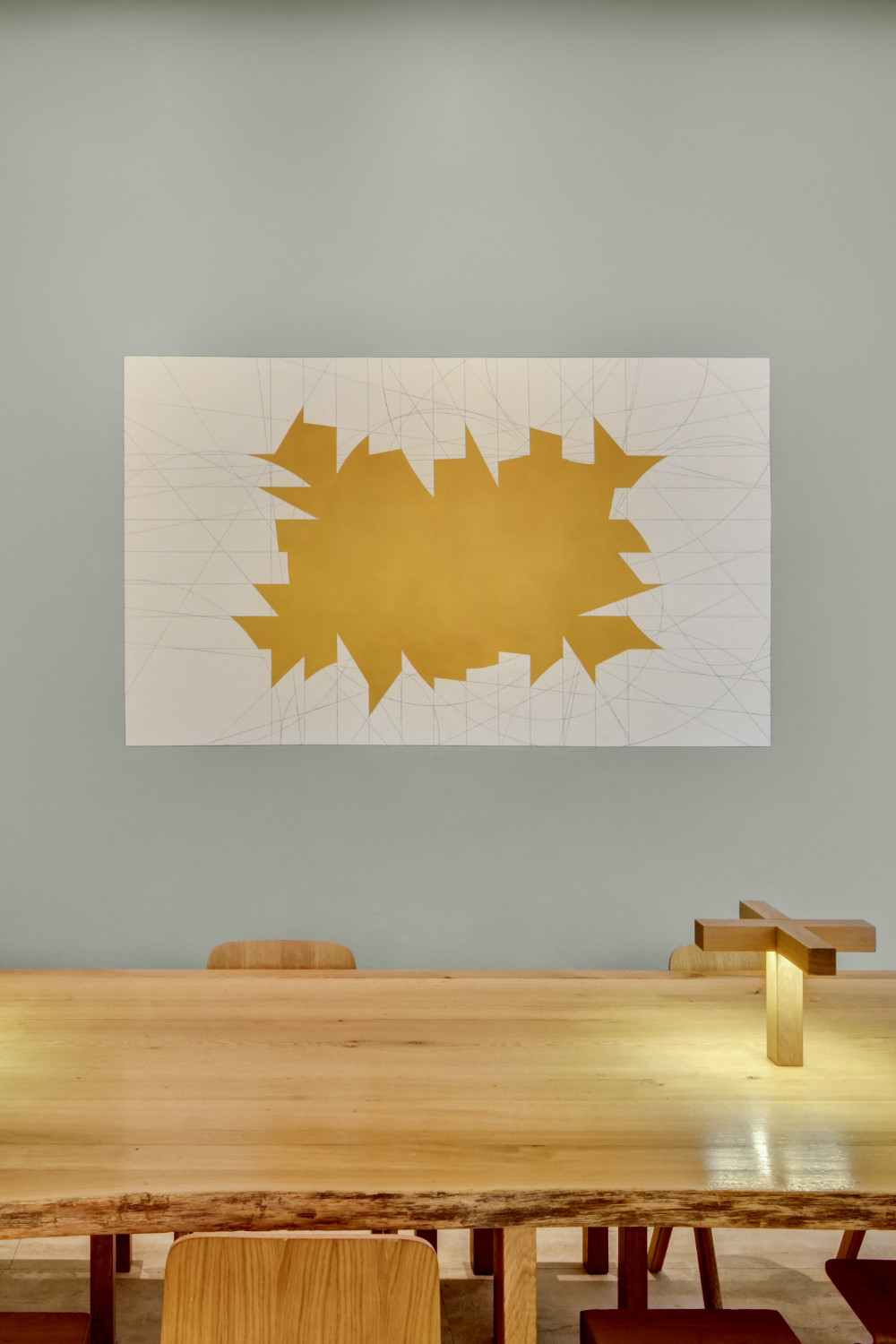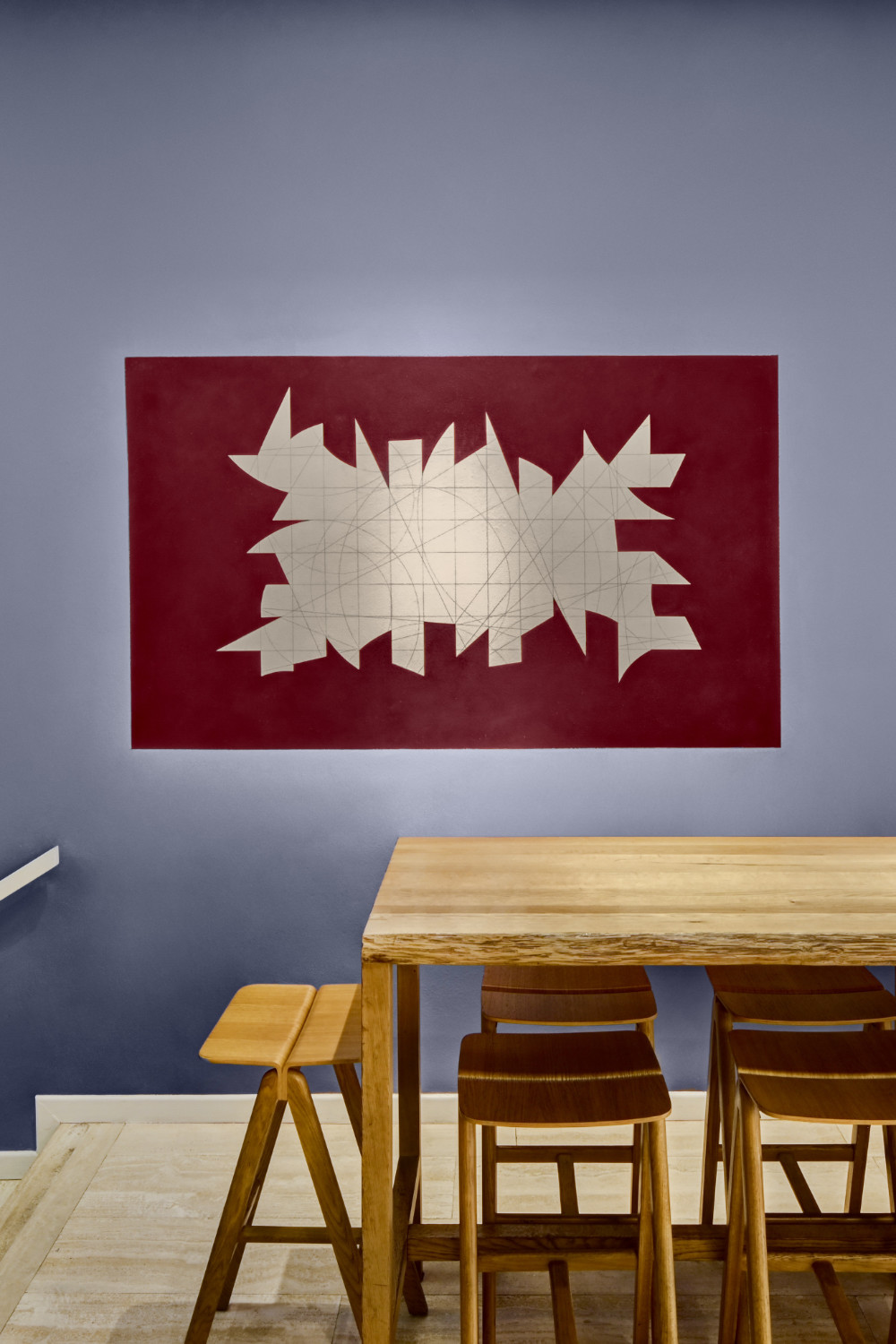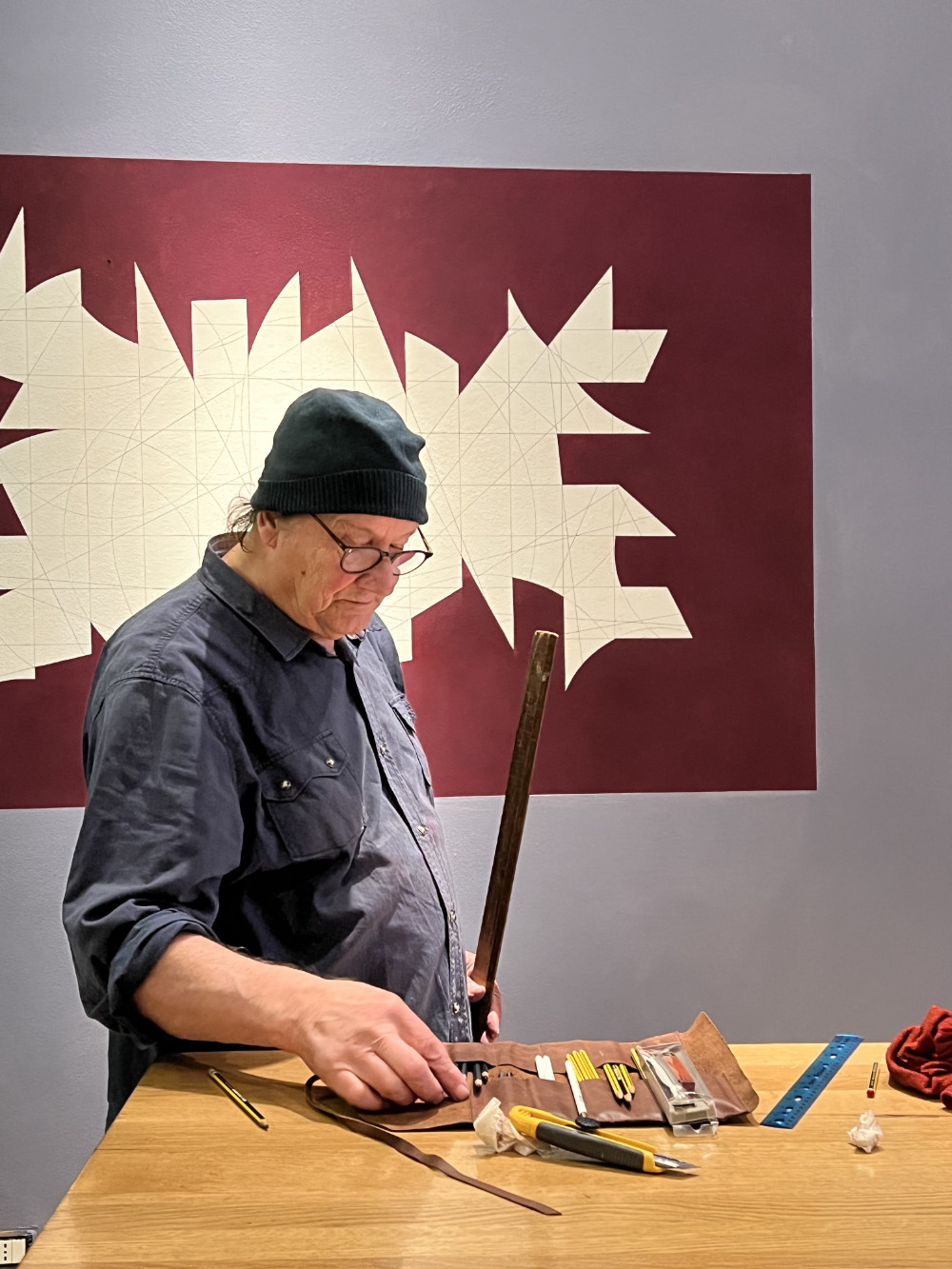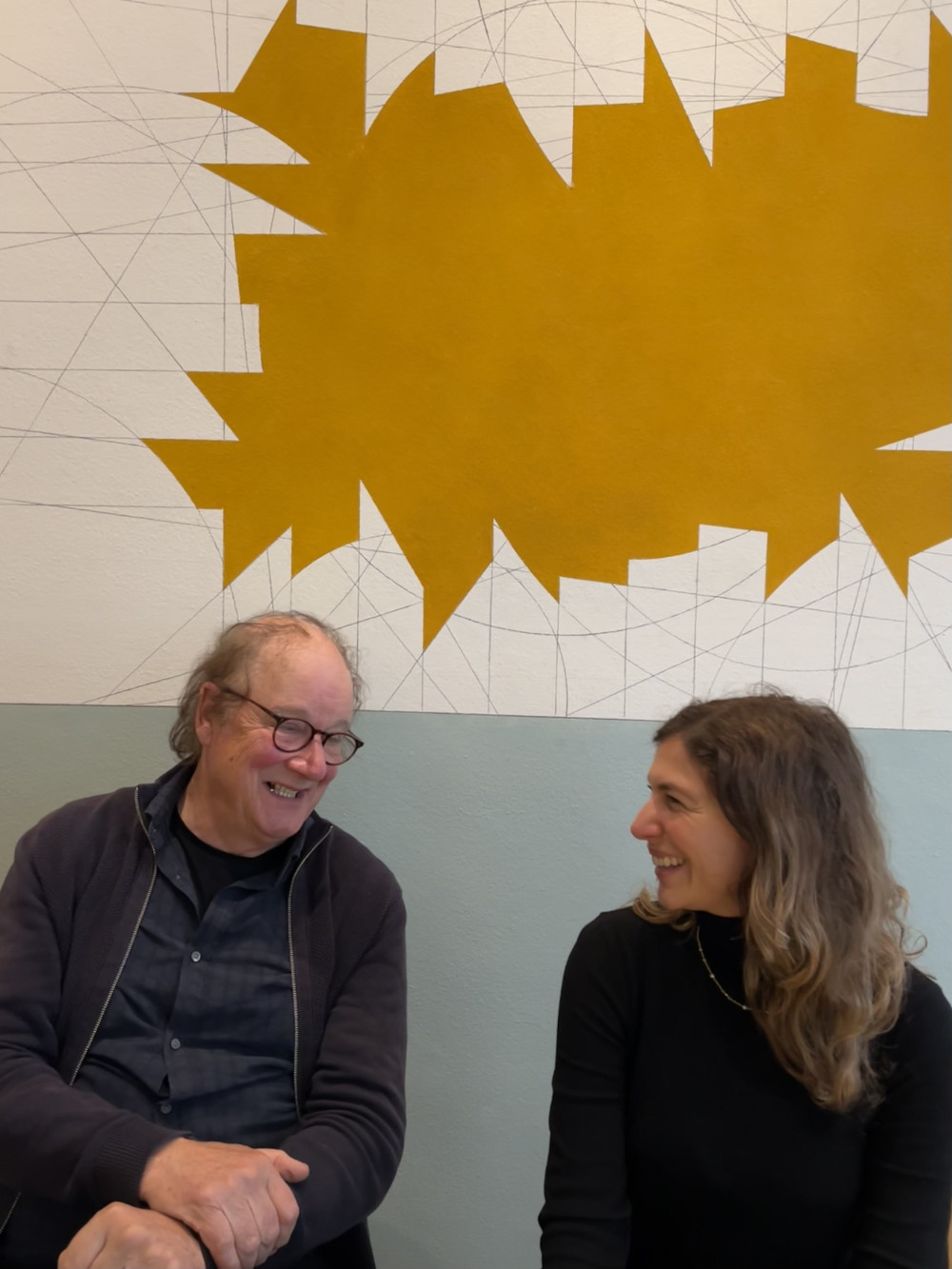




David Tremlett
David Tremlett. Somebody did something on the wall
by Irene Sofia Comi
“Do we eat to live? The question may be read in a 1997 work by David Tremlett, exhibited at Castello Falletti in Barolo. As I leaf through his catalogue entitled Se i muri potessero parlare (= If Walls Could Talk, Mazzotta, 2001), this sentence catches my attention. Apart from the simple fact that we are in a restaurant, and that the friendship that binds David and Brendan – the owner of Zazà – is partly based on their shared love of fine food, it contains some useful elements for introducing the project and the poetics of the English artist. Indeed, in drawing attention to the actions of eating and living, Tremlett seems to be questioning himself (or indeed us) about the essential functions of existence. Resorting to the stratagem of light irony used to conceal profound reflections, Tremlett’s lettering measures up concretely with the existent, with everyday ‘being’. Likewise, BBZR23 fits snugly into Zazà Ramen – a living space dedicated to cooking. As hinted at by the first two letters used in the title (BB are Brendan’s initials), the project was born out of a long-standing friendship, already homaged ten years ago in a smaller wall work, created by Tremlett a few weeks after the eatery opened and still visible in the three niches on the lower floor of the restaurant.
Although in terms of formal and temporal proximity BBZR23 closely dialogues with the permanent intervention created by the artist in the Chapel at the Parco Horti in Pavia (Wall Drawing Out, Wall Drawing INN, 2022), it is equally interesting to mention the other projects that Tremlett has carried out in Milan over the last four or five decades. A frequent visitor to Italy (his works in the chapels of the Langhe and in the Rione Alto underground station in Naples are famous), the artist has completed projects of various kinds in the city, both in institutional and non-institutional spaces. Examples include his solo exhibition at the PAC – Padiglione d’Arte Contemporanea (1993); his interventions in the Massimo Valsecchi gallery (since 1978); in Mario Bellini’s flat (2003); at the Rotonda della Besana (2004), and lastly, in the restaurant Trattoria Milanese (1991). From this brief rundown, it is clear how the Zazà Ramen location should not be seen as an exception but rather as a place very much in tune with the artist’s practices and his now historic relationship with the city.
In a perfect balance between traditional and alternative art exhibition spaces, Tremlett’s wall drawings – of which BBZR23 is one – have temporarily and otherwise inhabited various venues around the world. Geometric shapes, lettering, straight, oblique, curved, broken lines, splashes of colour: this is the language that makes up this endlessly eccentric and ironic series, embarked upon by the artist back in the 1970s, and which has been his main expressive medium since the 1980s. During the creative process, in addition to paint, Tremlett spreads pastel powder on the walls, working the pigments with his bare hands. Colour is thus conceived as matter, in an echo that looks both to the tradition of fresco and wall painting as well as to sculptural practices – the medium the artist originally trained in.
“Colour gives us tangibility. I believe that whether it is blacks and greys or primary colours or strange mixtures, they are the bricks, the clay, the steel and the marble of my constructions,” Tremlett stated in an interview with Achille Bonito Oliva.[1] In this sense, in the wall drawings – site-specific works by nature – architecture plays a primary role. Walls, niches, arches, columns, ceilings, floors, apses and windows: in a sort of hard-to-define form of osmosis, every constituent element of an architectural environment may become part of the Tremlett universe, and vice versa.
For these reasons, the wall drawings are located in a hybrid territory, between abstract representation and the presentation of reality. In the case of Zazà Ramen, the intervention is twofold: both regular and asymmetrical at the same time. In the two niches, the solids and voids – a recurring theme in Tremlett’s poetics – alternate in a harmonious interplay of colour, tickling the retina of the onlookers, and shows a spatial backdrop whose presence those onlookers would otherwise find rather more difficult to grasp in neutral conditions. On the one hand, we can trace the graphite pencil strokes that form regular, broken lines. The eye runs along them from top to bottom, from right to left or from the centre outwards, until it sinks (or redeems itself?) in a spot of colour, an expression of the loss of control, free and changing. On the other side, the one leading towards the stairs, a quasi-frame surrounds the drawing created by the artist, thus opening up a breach into a negative space, a pure and simple white plaster that the graphite marks highlight. Straddling two- and three-dimensionality, BBZR23 is thus both a tool for renewing our perception of reality and for perceiving its essence. As Tremlett suggests in the title of a wall drawing from 1991: Somebody did something on the wall.”
BIOGRAPHY
“David Tremlett (Saint Austell, UK, 1945), a native Cornishman, works with various media, such as sculpture, installation, painting and drawing. Having trained as a sculptor at the Birmingham School of Art and at the Royal College of Art in London, he has fuelled his artistic imagination with numerous trips around the world, bringing him into contact with different cultures and providing him with multiple sources and models of inspiration. He began experimenting with wall paintings in the 1970s and developed a particular fondness for site-specific, often temporary works.
In 1992, he was shortlisted for the Turner Prize, and over time his works have been exhibited in some of the most authoritative galleries and museums: from the Centre Pompidou in Paris to the Stedelijk Museum in Amsterdam, from the Musee des Beaux Arts in Grenoble to the Museo Pecci in Prato, from the Fundaciò Joan Mirò in Barcelona to the Museum of Modern Art in New York, as well as galleries such as the Serpentine in London, the Mizuma Art Gallery in Tokyo and Nigel Greenwood in London, where the artist made his debut in 1970. In 2011 he created the permanent work Drawing for Free Thinking at Tate Britain.”
Critical text by Irene Sofia Comi
[1] See ‘Biography and Bibliography’ at https://davidtremlett.com, published by Achille Bonito Oliva in Enciclopedia della parola. Dialoghi d’artista 1968–2008, Milan, Skira, 2008.
